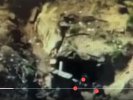En ymmärrä että miksi USA ja NATO-kumppanit eivät ole antamassa vanhoja F-16C Block 52 tai F-16AM -koneita Ukrainalle. USAF tuskailee vanhojen F-16 koneiden päivittämisen kanssa ja niitä ollaan poistamassa jopa 300 kpl tällä vuosikymmenellä. Vanhojen koneiden käyttökuluista säästämällä saataisiin lisää rahaa NGAD ja F-35 ohjelmiin
https://www.thedrive.com/the-war-zo...e-types-largest-combined-upgrade-package-ever.
https://www.thedrive.com/the-war-zo...ded-f-16s-till-2048-as-fate-of-f-15c-in-doubt
Norja möi ahneuksissaan 32 kpl vanhaa, mutta päivitettyä F-16AM konettaan Romanialle ja keräsi 450 miljoona euroa rahaa siitä
https://www.aviacionline.com/2022/0...es-the-purchase-of-32-ex-norwegian-f-16-mlus/. Kreikasta löytyy myös F-16C koneita, joita olis voitu antaa Ukrainaan.
Asia voitaisiin hoitaa kierrättämällä kalustoa rapakon takaa näihin maihin, tietysti moderninpana tai antaa suoraan USAF varastoista. Lentäjien koulutus olisi pitänyt aloittaa jo huhti-toukokuussa viimeistään, koska sota kestää pahimillaan vuosia. Nyt pitäisi katsoa pitkälle tulevaisuuteen eli +5 vuoden haarukassa vähintään ja luoda Ukrainalle edellytyksiä rakentaa omaa kykyä ja tulla NATO-yhteensopivaksi.
F-16 Block 50/52 toisi huomattavasti lisää kykyä puolustaa ilmatilaa ja tukea joukkoja maalla sekä suorittaa Harpooneilla iskuja kauas merelle. Tämä puolestaan vaikeuttaisi venäjän merisaartoa ja HARM-ohjuksilla varustettuna venäjän ilmatorjuntaa voitaisiin painostaa sekä saada lisää operatiivista toimintavapautta taistelua-alueilla. F-16C block 50 / 52 versioissa olisi valmiina jo integraatio ALIC- järjestelmään ja AN/SQ-213 HTS podi saatavilla HARM-ohjusten käyttämiseksi. Block 50/52 voi kantaa JDAM- ja JSOW pommeja/liitopommeja sekä AIM-120 AMRAAM- ohjuksia. Lisäksi tähän versioon voi integroida Harpoon-ohjuksia.
Asepaketti mitä Ukrainalle pitäisi lähettää minimissään:
- 24 + 24 kpl F-16AM /block 52
- 300 AMRAAM C7
- 200-300 AIM-9X block I ja paljon AIM-9M versioita
- 20mm PGU-28 tykinammuksia
- GBU-38, GBU-31 ja GBU-32 vähintään 1000 kpl
- 100+ JSOW AGM-158C
- Harpoon AIR- versioita 100+ kpl
- AGM-88 HARM II 100 kpl
- pimeänäkölaitteita
- pilottien varusteita
- huoltoinfraa
- varaosia
- koulutusta
- simulaattoreita
- lentopolttoainetta
Näillä saataisii Ukrainan ilmavoimat oikeasti luomaan nahkansa uudelleen ja taistelemaan ilman kestämättömiä tappioita piloteille sekä kalustolle. Samalla venäjän halu käydä sotaa ja saartaa Ukraina kävisi entistä kalliimmaksi. Se voisi nopeuttaa sodan loppumista ja lisäisi Ukrainan joukkojen moraalia sekä uskoa taistelussa.
Tietoa:
Structure & Avionics
The standard avionics fit for the Block 50 includes:
- Honeywell H-423 Ring Laser Gyro Inertial Navigation System (RLG INS) for rapid in-flight alignment;
- GPS receiver;
- Data Transfer Cartridge with a larger capacity (128KB) to accommodate the planned avionics growth;
- Improved Data Modem for faster data transmission;
- AN/ALR-56M advanced RWR;
- AN/ALE-47 threat adaptive countermeasure system;
- digital terrain system data transfer cartridge;
- cockpit compatible with night vision systems;
- advanced IFF interrogator;
- Upgraded Programmable Display Generator (UPDG);
- MIL-STD-1760 data bus for programming new-generation PGMs;
- Horizontal Situation Display (HSD) for increased situational awareness and tactical flexibility on all missions.
The Block 50/52 also carries the Westinghouse AN/APG-68 V(5) radar, which offers longer range detection against air targets and higher reliability. The radar has a programmable signal processor that employs very high-speed integrated circuit (VHSIC) technology. The latest batches of Block 50/52 carry the same radar, but versions V(7) and V(8), which offer even greater performance envelopes. The VHF/FM antenna is now incorporated into the leading edge of the vertical fin and has an extended operating distance. The cockpit also includes 2 monochrome MFD's (soon to be replaced by the
MLU's color displays) and a FOV HUD.
The Block 50's have the capability to fire the
AIM-120 AMRAAM, the new AGM-65G
Maverick missile and the
PGU-28/B 20mm cannon round. The Block 50/52 is capable of carrying the new
JDAM munition, the AGM-154A/B JSOW and is the first F-16 version to integrate the
AGM-84 Harpoon antishipping missile. The AGM-137 TSSAM stand-off attack missile was also foreseen in its weaponry, but subsequently cancelled. The aircraft can launch the Harpoon in line-of-sight, bearing-only, and range/bearing modes. The addition of the Harpoon gives the F-16 a significant standoff range anti-shipping capability, especially when combined with optional 600-gallon fuel tanks.
The first Block 50 F-16 was delivered to the USAF in November of 1991. Over 300 have been delivered by early 1997, to four different customers. New production Block 50/52 aircraft ordered after 1996 also include selected features from the MLU program: color multifunction displays, a three-channel video tape recorder, and the modular mission computer.
The F-16CJ/DJ Block 50D/52D have the HARM avionics/Launcher Interface Computer (ALIC) resulting in a full autonomous employment capability of the HARM missile. This capability adds the SEAD (Suppression of Enemy Air Defenses) mission to the already extensive list of missions the F-16 is capable to perform.
The aircraft features full integration for the advanced AGM-88 HARM II and Shrike anti-radiation missiles, a Lockheed Martin Pave Penny laser ranger pod and the Texas Instruments (now Raytheon) AN/ASQ-213 HTS (HARM Targeting System). The pod is mounted on the starboard intake hardpoint and contains a super-sensitive receiver that detects, classifies, and ranges threats and passes the information to the HARM and to the cockpit displays. With the targeting system, the F-16CJ/DJ has full autonomous HARM capability. The HTS pod can be omitted however - in that case, RC-135 Rivet Joint aircraft support the F-16 in sorting and prioritizing targets in dense threat environments.
Two HARM missiles are normally carried on a typical SEAD mission, however, 4-missiles loads are currently being test-flown at Eglin AFB.
Deliveries of the Block 50D/52D began in May 1993. All but the earliest Block 50 models have been upgraded to Block 50D standard.
https://www.f-16.net/f-16_versions_article9.html










